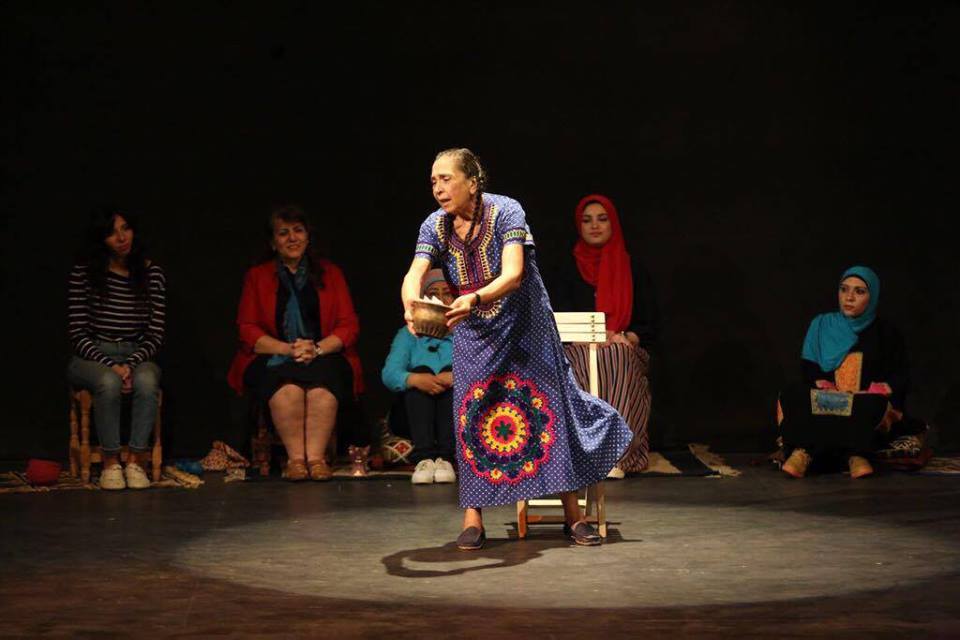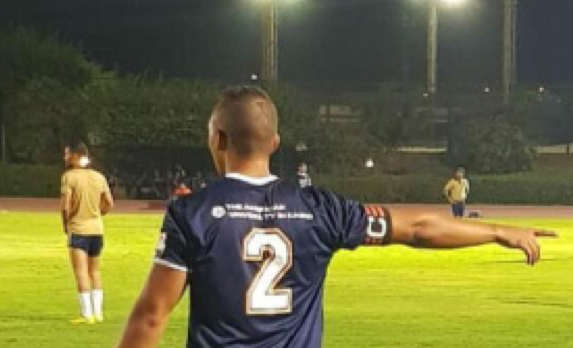‘Mother-Line Story Project’ Explores Maternal Connections on Stage
By: Mahmoud Sherif
Follow @mahmouddsheriff
Theatrical art is often an expressive platform where performers can engage serious subjects and use them to create thought-provoking – and entertaining – scenes. It is a lens through which people can understand the message behind the performance.
Last week, a series of performances at AUC’s Falaki Theater under the title The Show Must Go On addressed a number of issues regarding the social, political and communal aspects of gender difference and gendered experience.
The program highlighted these issues in Egyptian society and included discrimination against women and ‘cultural’ stereotyped scenarios in the household during marriage.
The program included three shows, one of which was the ‘Mother-Line Story Project’, or ‘Hekayat Khat El Om’, which is comprised of a storytelling ritual that can be traced back to the second wave of the feminist movement.
This second wave started in the 1960’s in the United States, but gradually spread all over the world.
The first wave was mainly concerned with universal suffrage and other women’s civil, political and legal rights. The second wave, on the other hand, drew attention to sexuality and legal inequalities in the workplace and within houses as well.
The theatrical performance kicked off with a slideshow of photos of daughters with their mothers, mothers with their own mothers, and granddaughters with their grandmothers.
When the slideshow faded to black 12 women of different ages appeared on stage. They then began to enact the types of conversations that are very familiar to most Egyptian mothers and daughters.
One mother, for instance, lectured a daughter on how to correctly wrap a vine leaf stuffed with rice. Another taught her daughter how to properly apply makeup.
Other scenes depicted grandmothers who partook in traditions of poking a paper doll in order to prevent envious people from causing harm to her or her family.
In this regard, the Project re-established the powerful connection between today’s women and their maternal ancestors, and served as a platform for women to share stories of their mothers
and grandmothers with this historical narrative in mind.
This project is an artistic representation of the famous mother-line ritual.
Mother-son and mother- daughter relationships are often complex, often colored with love and appreciation at times, but disappointment and failure as well.
The acting acumen on stage was very palatable; it was on point, in terms of the entire production; lighting, scripts, cast and even the background music.
First, the script included a little bit of everything that identifies with local culture, which made the performances perhaps more exclusively Egyptian in experience and narrative and not necessarily representative elsewhere.
The Project involved all levels of social classes, discussed problems newlyweds encounter, and included mothers and their struggle with guidance by their elders, religion – basically the full package.
During the performance, one girl argued with her mother for refusing to let her stay out late; “you’re not a boy, and therefore, cannot protect yourself,” the girl was told.
Another mother wakes her daughter up at 2 in the afternoon, telling her to go find someone to marry.
In yet another scene, housewives are ranting about their husbands.
Many of these conversations are relatable on a personal level, because of the familiarity of the struggles portrayed on stage.
Most in the audience could recall a time when their mother called to check up on them, or asked them not to stay up late, or be wary of traffic.
It is through these familiar narratives that the performances then become tributes to our mothers.
But they also pay homage to our grandmothers, who had always hoped for us to get married and have kids, and their endless string of advice to help us reach the destination of what they clearly see as familial and life-long bliss.
Through the screenplay – the drama, humor and sharing of a public space – the audience finds a commonality, too, in these scenes because they transcend religion, social class, and ideology.




